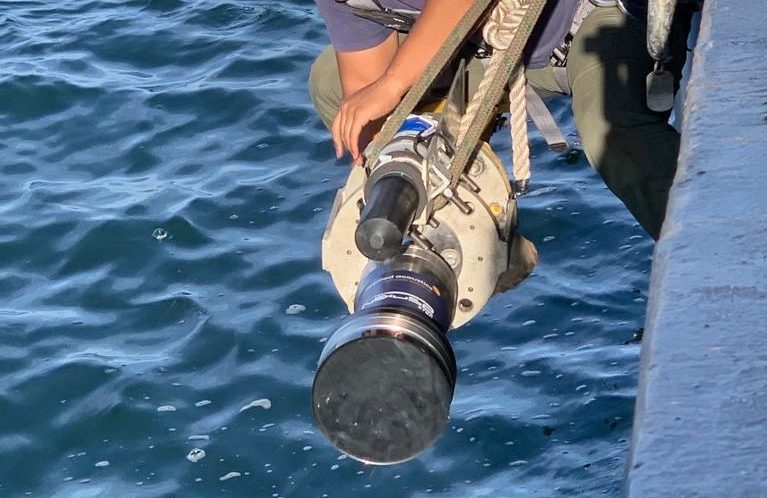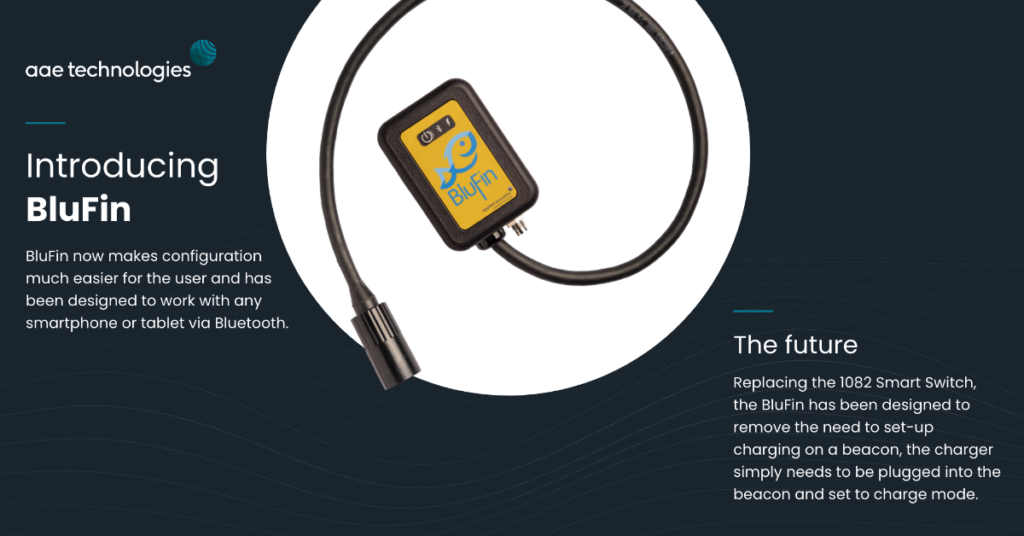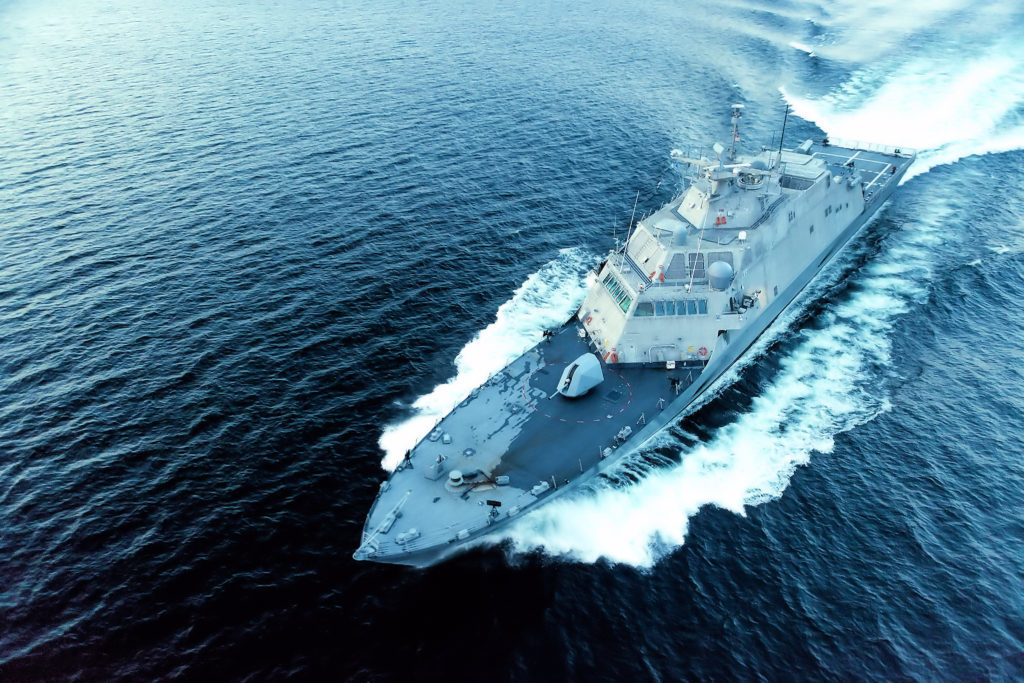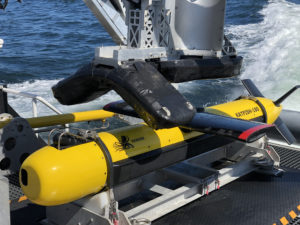Category: Defence
Ahead of Combined Naval Event 2023 in Farnborough, aae Business Development Manager, Gavin Willoughby, looks at the benefits of autonomous underwater robotics to the defence industry and other military organisations.
Gavin, who has spent nearly twenty years supporting the development of subsea positioning technologies, continues to champion awareness of emerging technologies to combat and neutralise underwater threats.
Turning the tide on naval threats
In short, maritime defence organisations must invest heavily in autonomous underwater robotics to protect personnel. We’ve seen maritime defence organisations invest heavily and increase their dependence on uncrewed surface vessels and autonomous underwater robotics.
The role of AUVs and ROVs
Autonomous underwater vehicles (AUVs) and remotely operated vehicles (ROVs) are frequently deployed for intelligence, surveillance & reconnaissance (ISR) operations, as well as anti-submarine warfare (ASW) and mine countermeasure (MCM) operations. Combined with Ultra Short Baseline (USBL) tracking systems, leveraging the right technology will save lives.
In order to protect naval personnel from potential threats, maritime defence organisations are investing heavily and increasing their dependence on uncrewed surface vessels and autonomous underwater robotics.
Benefits of USBL tracking in underwater missions
While these robotic platforms are designed to accomplish specific tasks, such as the identification and neutralisation of potential underwater threats, the successful completion of these missions depends on peripheral subsystems that can provide location awareness, accurate positional information and target guidance, such as Ultra Short Baseline (USBL) tracking systems.
When directing an AUV or ROV towards a known target and monitoring its position during the mission, an Ultra Short Baseline (USBL) tracking system can provide an effective and uncomplicated method of confirming and recording the course of the vehicle.
How it works
The coordinates of a potential target are fed into the USBL’s control system, allowing the vehicle operator to monitor its path and make necessary corrections as it heads towards its intended destination. Without a USBL system, vehicle positions would be unknown, and AUV and ROV operators would be effectively working blindfolded.
One of the more recent developments in maritime defence applications is the use of autonomous surface vessels (ASVs) from which to deploy remote subsea vehicles. ASVs further minimise human exposure to potential threats and create a further set of requirements for autonomous deployment.
Whilst AUVs and ROVs still require tracking and monitoring, this operation may no longer be carried out by operators stationed on a nearby mothership, but potentially from a crew hundreds of miles away. The use of through water acoustics coupled to satellite transmissible data allows human operators to perform their duties while remaining far from the theatre of operation.
What technologies are available now?
OEM versions of aae’s Nexus 2 USBL or MIPS 2 systems are critical catalysts in these types of operation, autonomously providing reliable and accurate subsea positioning, and then utilising radio modem technology to send the data to a remote operations centre.
While vessel-based USBL systems are still pivotal to these operations, they can only provide positional data alongside an integrated, reliable acoustic transducer on the individual vehicle. As a critical component of the system, aae makes a wide range of transducers for direct integration into AUVs and ROVs, providing clear and precise communication between the remote vehicle and its base station.
aae technologies in the defence market
Around 300 of our USBL systems have already been put to work in the defence market, with variants ranging from commercial off the shelf systems (COTS) to specially-designed OEM systems using state-of-the-art acoustic technology, engineered to meet the individual requirements of military groups and defence contractors.
However, as a provider of these key components for MCM systems, it is of fundamental importance that we remain aware of advances in the associated technology in order for us to continue innovating our products in ways that remain relevant to the industry. With potential threats becoming ever more sophisticated, it’s vital that we maintain our ongoing development programs to counter these ever growing challenges.
Whether it’s portable systems used by mobile units on small craft, integrated systems permanently installed on naval vessels or airborne systems deployed from helicopters, our engineers and wider team offer genuine expertise in an industry with a growing reliance on subsea acoustics.
Find us at Combined Naval Event 2023
To learn more about the benefits of aae technologies for underwater tracking and monitoring in defence, make sure to visit our stand on D29.
Despite the challenges of the pandemic, the struggling economy and the turbulence within the logistics industry, aae technologies has continued to swim against the current and deliver exceptional results; pushing the boat out with new products and pioneering new solutions for the marine industry.
That said, 2022 has been a testing time for all industries, with rising costs and logistical issues in the supply chain impacting lead times and cost rises. We have been working hard to mitigate this by diversifying our supply chain network, vastly increasing stock quantities on order and committing to holding more systems, where possible, on the shelf ready to be shipped.
For now, we hope that you enjoy reading our roundup of 2022 – thank you once again for your support, and we look forward to sharing more exciting innovations in 2023.
Launches and developments
Our design team has been busy pushing new innovations, addressing clients’ needs and updating functionality to keep our clients ahead of the curve. These include:
Easytrak USBL upgrades
Earlier in the year we updated the accuracy and performance of our entire Easytrak USBL product offering, including a redesign of the Nexus 2 and Pyxis omni-directional transceivers, which now boast 7 internal elements instead of the previous 5.

Launch of BluFin
Autumn also saw the launch of this cool pocket-sized device with Bluetooth connectivity, which gives customers the freedom to charge and configure 1100 and 1000 series Mini beacons on the go, replacing the 1082 Smart Switch charger.

Milestone defence contract
We were delighted to sign a contract for the supply of multiple MIPS 2 USBL systems to a major defence client – not least because it represents the 300th USBL system assigned to military service.

New MiniPod Submersible GNSS receiver developed for major construction client
A large construction company has purchased a number of re-engineered MiniPods and high accuracy submersible inclinometers to be used on a large wind farm installation project. These newly developed MiniPods and inclinometers are to be used for accurate tower installations including GNSS derived heading and inclination.
The re-engineered MiniPod is able to use corrections from each other to calculate inclination and heading between the MiniPods, as well as wirelessly transmit positioning data and receive RTK corrections. The secondary high accuracy inclinometer will pass data to the MiniPod, which will also utilise the wireless network to give the accurate pitch and roll of the platform to the survey team.
Significant order received for modified 1559 release beacons
An offshore engineering client, specialising in lifting and handling solutions, has placed a large order of acoustic release beacons for a project commencing in spring 2023. The re-engineered 1559 release beacon includes a large rope bucket and 40m length of rope.
The whole unit – which includes flotation collars – is designed to fit on an engineered platform and acoustically release, bringing up the 40m of rope which will be attached to a much larger umbilical.
The umbilical is a large piece of the final phase of the project and is imperative that it’s returned safely to the surface to ensure project completion. The 1559, which uses the same acoustic design as our popular 1519 release beacon, is designed specifically for long deployments (up to 5 years at sea) and is rated to 250kg working load limit (WLL).
Coming soon
We will be launching new systems across all product lines in 2023, further enhancing our acoustic positioning, geophysical and submersible GNSS range. Stay tuned for further information!
New joiners
As the world continues to focus its energies on renewable energy, we’ve needed to bolster our team to keep up with demand. We’re pleased to have made four fantastic appointments in 2022, representing expertise across the breadth of our production and delivery.
Andrew Watts joined us as a Design Engineer, Jordan Phillips as Purchasing Assistant, Tomasz Prudlak as Quality Control Inspector, and Nick McClean as Assembly Technician, we also have a number of new appointments lined up in the new year.
Movers and shakers
Adam Darling, our Group Chairman and MD, was honoured to attend a private lunch in May at Canada House, London, hosted by The Honourable Tim Houston, Premier of Nova Scotia. The objectives of the lunch were to celebrate Nova Scotia – UK relations in the ocean-tech sector and to discuss further opportunities.
As one of only five industry-leading companies to be invited, we were very pleased to join the discussion
Closer to home, we welcomed several work experience students over the summer; and made two well-deserved promotions. Congratulations to Ashleigh Mingay, promoted to Operations Co-ordinator in February, and Bonnie Green, promoted to Purchasing Supervisor in August.
Out and about
From the huge showcase that is Oceanology to SAGEEP, WEDA to IMAGE: this year has seen a return to some of the world’s most high profile industry events, and it’s been a pleasure to connect with the global ocean tech community once again.
Our whistle-stop tour of the world took in no less than 20 events, covering UK/Europe, North America and Asia. In fact, our attendance at OSEA just last month in Singapore felt really significant, as it signalled our return to Asia for the first time since the pandemic.
We look forward to meeting many more current and future clients at similar events in 2023. We’ll share our events calendar early next year so that we can make sure to meet you in person if you’re headed to any of these.
But for now – if we don’t speak or see you before the start of 2023 – have a very Happy New Year!
In order to protect naval personnel from potential threats, maritime defence organisations are investing heavily and increasing their dependence on uncrewed surface vessels and autonomous underwater robotics.
Autonomous underwater vehicles (AUVs) and remotely operated vehicles (ROVs) are frequently deployed for intelligence, surveillance & reconnaissance (ISR) operations, as well as anti-submarine warfare (ASW) and mine countermeasure (MCM) operations.
While these robotic platforms are designed to accomplish specific tasks, such as the identification and neutralisation of potential underwater threats, the successful completion of these missions depends on peripheral subsystems that can provide location awareness, accurate positional information and target guidance.
USBL tracking systems
When directing an AUV or ROV towards a known target and monitoring its position during the mission, an Ultra Short Baseline (USBL) tracking system can provide an effective and uncomplicated method of confirming and recording the course of the vehicle.
The coordinates of a potential target are fed into the USBL’s control system, allowing the vehicle operator to monitor its path and make necessary corrections as it heads towards its intended destination. Without a USBL system, vehicle positions would be unknown, and AUV and ROV operators would be effectively working blindfolded.
Recognised as a primary supplier of underwater acoustic systems, applied acoustics and the aae technologies group have provided USBL systems for many military scenarios, with a particular focus on the Mine Counter Measures (MCM) arena. Over 250 of our USBL systems have been put to work in the defence market, with variants ranging from commercial off the shelf systems (COTS) to specially-designed OEM systems using aae’s state-of-the-art acoustic technology, engineered to meet the individual requirements of military groups and defence contractors.
Whether it’s portable systems used by mobile units on small craft, integrated systems permanently installed on naval vessels or airborne systems deployed from helicopters, our engineers and wider team offer genuine expertise in an industry with a growing reliance on subsea acoustics.

Autonomous surface vessels
One of the more recent developments in maritime defence applications is the use of autonomous surface vessels (ASVs) from which to deploy remote subsea vehicles. ASVs further minimise human exposure to potential threats and create a further set of requirements for autonomous deployment.
Whilst AUVs and ROVs still require tracking and monitoring, this operation may no longer be carried out by operators stationed on a nearby mothership, but potentially from a crew hundreds of miles away. The use of through water acoustics coupled to satellite transmissible data allows human operators to perform their duties while remaining far from the theatre of operation.
An OEM version of aae’s Nexus 2 USBL system is a critical catalyst in these types of operation, autonomously providing reliable and accurate subsea positioning, and then utilising radio modem technology to send the data to a remote operations centre.
Positioning beacons
While vessel-based USBL systems are still pivotal to these operations, they can only provide positional data alongside an integrated, reliable acoustic transducer on the individual vehicle. As a critical component of the system, aae makes a wide range of transducers for direct integration into AUVs and ROVs, providing clear and precise communication between the remote vehicle and its base station.
Some of these transducers can be retrofitted as standalone battery-powered transponders. However, aae has a long history of working directly with vehicle manufacturers to provide integrated solutions at factory-level, creating complete and comprehensive systems.
Cutting-edge military solutions
In this constantly evolving market where technology and industry requirements continue to drive each other forward, aae remains committed to providing cutting-edge systems and solutions, maintaining long-term partnerships within the global maritime security sector.
Read more about our defence products and capabilities, or feel free to get in touch to discuss your organisation’s requirements in greater detail.
